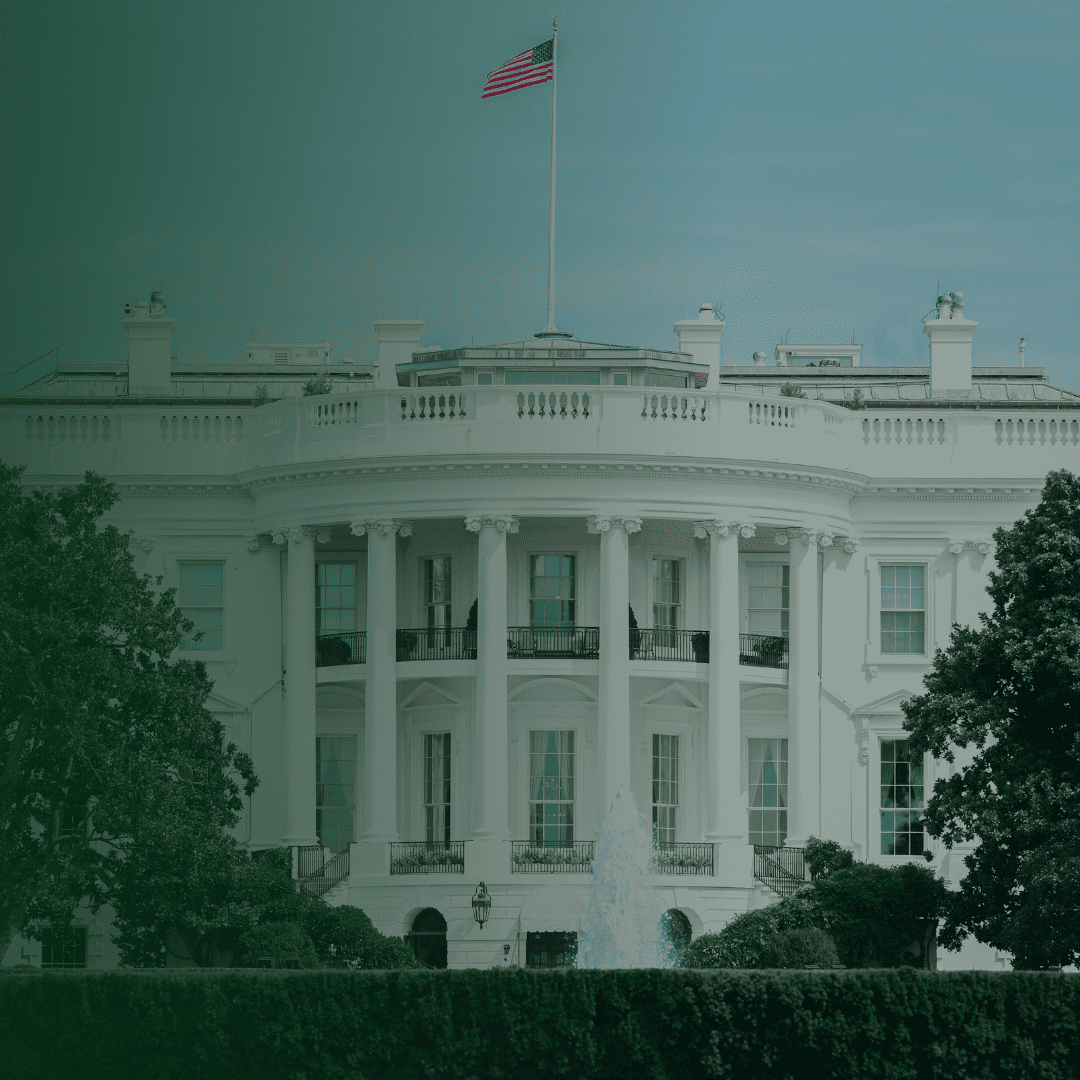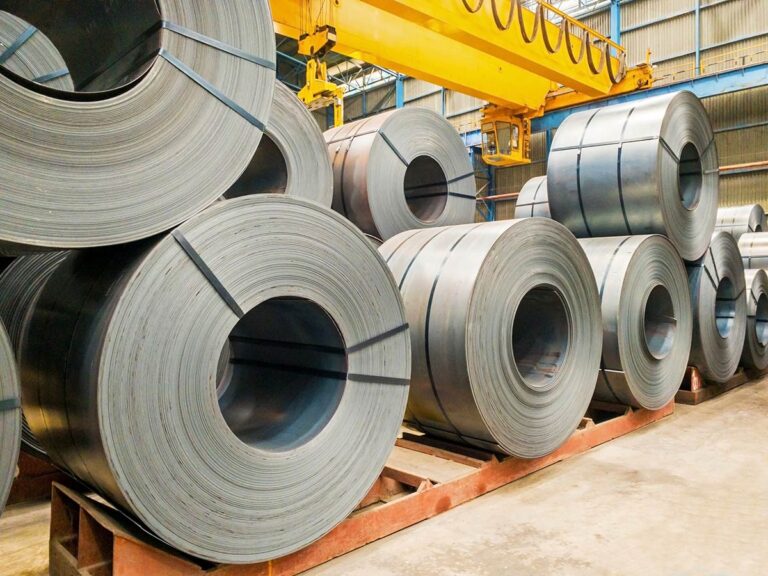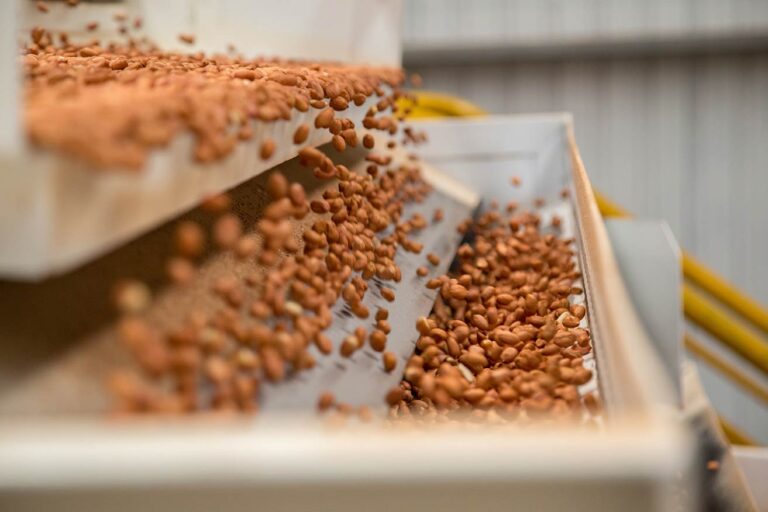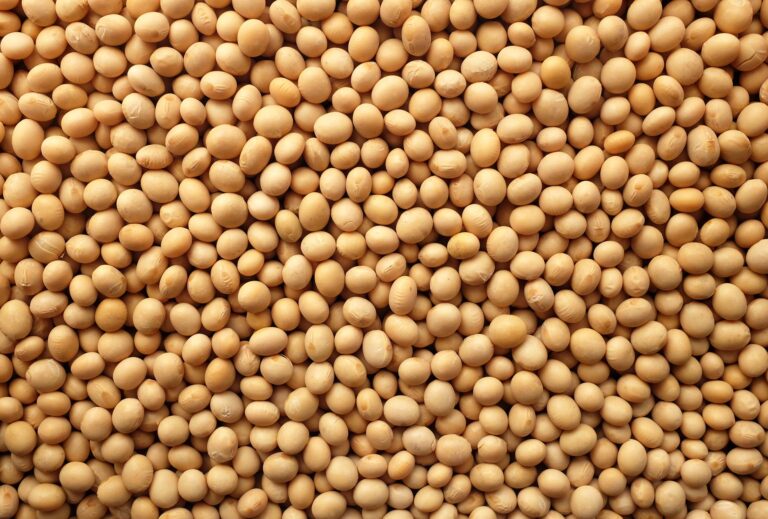Expana’s global team of specialist reporters has been tracking every twist and turn in the fluid tariff situation. The following weeks is public here and will be released weekly. if you would like the most recent version, become a customer, click here to get a demo.
INTRODUCTION
US President Donald Trump’s tariff stance has led to an almost-daily recalibration for global markets as tariff deadlines have been extended and recreated; other countries in the crosshairs have implemented retaliatory tariffs too.
The initial 25% tariffs on Canada and Mexico are paused until April 2, 2025, while product that was previously compliant under the US-Mexico-Canada Trade Agreement (USMCA) is afforded continuity under that agreement. Tariffs on Canadian energy were also rolled back to 10%. However, sweeping 25% tariffs are now in play for all steel and aluminum imported into the US.
Canada responded with 25% tariffs on US steel and aluminum as well as on $30 billion in US goods like orange juice, peanut butter, wine, spirits, beer, coffee, paper products, and more.
The European Commission’s (EC) response was delayed until mid-April after releasing a tariff package with targeted US commodities on March 12.
US tariffs on China doubled from 10% to 20% across-the-board. In a response effective March 10, Chinese leaders implemented a 15% tariff on chicken, wheat, corn, and cotton, as well as 10% tariffs on sorghum, soybeans, pork, beef, seafood, fruits, vegetables, and dairy. The Chinese government also suspended US log imports as well as soybean export qualifications to China for three US companies.
On February 10, the US administration made clear its plan for reciprocal tariffs on global trading partners that will go into effect on April 2. Since, industry participants across commodity markets have been on edge, pricing-in new risks, and positioning to anticipate shifting trade flows.
As of March 19, US Treasury Secretary Scott Bessent explained that countries will receive a rate based on current tariffs on US products, non-tariff trade barriers, among other factors.
Now, international leaders are scrambling to secure favorable terms and operators across various commodity markets are lobbying for exemptions.
Expana’s global team of specialist reporters has been tracking every twist and turn. Here’s
where key commodity markets stand as of this week…
BEVERAGES (ALCOHOLIC) by Ryan Gallagher
On March 12, the EU announced tariffs on €26 billion ($28.31 billion) worth of US products, in a statement which mentioned Kentucky bourbon. The implementation date was pushed to mid-April as concerns exist about market impact on region-specific alcoholic beverages.
US President Trump responded via social media to counter with possible 200% tariffs on European alcohol, which he alleged would be “great” for wine and champagne businesses within the US.
Alcoholic beverages have been targeted during the US administration’s tariff regime–even those which had been previously deemed exempt from trade measures like Kentucky bourbon, Mexican tequila, Canadian whisky, and now EU products like wine, champagne and cognac from France.
The LCBO, a government-owned liquor wholesaler in Ontario removed all US alcoholic beverage products from shelves and their online store.
COFFEE, COCOA, & TEA by Ryan Gallagher, Andrew Moriarty, Steve Wateridge
During recent record-high coffee contract prices, this commodity and main grower Brazil have not been the target of US tariffs. Trump mentioned tariffs on Colombia (another major grower). Yet, markets had no time to react as the statement was retracted later that same Sunday.
Tariffs could impact cocoa trade flows. The key ingredient in chocolate is largely grown in African countries like Côte d’Ivoire and exported to Europe and North America to be ground and used in products around the world. US tariffs spurred Lindt to supply direct to Canada via Europe and cut out US shipments. This may be a temporary solution, when taking into account the incoming EUDR. If Trump’s tariff plan aims to reindustrialize the US, chocolate companies with factories in Mexico and Canada may be willing to invest in grinding cocoa beans in the US.
Mostly, coffee, cocoa, and tea are not grown in the US. So, the reciprocal tariffs on April 2 may affect imports from growing regions like South and Central America, Africa, and Asia.
DAIRY by Courtney Shum, Jose Saiz, Brittany Feyh
Retaliatory tariffs from key trading partners, including Mexico, Canada, and China—which account for half of US dairy exports—make US dairy products more expensive abroad. To help offset this, US producers are expanding into Asian and Central American markets.
Uncertainty surrounding trade policies has led to price fluctuations in dairy futures, making risk management more challenging. Additionally, significant investments in cheese production could drive price volatility once tariffs take effect. Mexico is the US’s top cheese trade partner, and retaliatory tariffs could dent demand, though not eliminate it. China buys a lot of US low-protein whey for animal feed and has previously exempted it from tariffs, but they now plan to hold firm. With market volatility high, buyers are keeping purchases minimal amid uncertainty.
Some US dairy exports are redirected to alternative markets, but these shifts can include increased logistical costs. Mexico has agreed on free trade with the EU, and European companies may fill the gap left by the US. Higher tariffs on Mexico, a crucial market with fast delivery times, would be a major setback for the US dairy industry.
EGGS by Ryan Hojnowski, Allison Berry
In 2024, the US exported $403.92 million dollars in eggs and egg products to Canada and Mexico, the two largest importers of US eggs. Eggs that fall under USMCA are currently exempt from the 25% tariff, though further negotiations could put these markets in jeopardy.
Turkey is expected to send 460 million breaking stock eggs to the US during the first half 2025. In late February, Turkey’s Ministry of Trade implemented an export tax on eggs, equating to roughly $9.89 million additional dollars paid by US importers.
Corn and soybeans, two major ingredients used in layer feed, could become cheaper if the US loses its foothold in international markets. Imposed tariffs on corn and beans would reduce the cost effectiveness of other countries to import US grain, resulting in a surplus, and thus decreasing the price of feed in the domestic market.
The US egg market has fluctuated wildly in recent months, with the Midwest Large EBP touching a high of $8.58/dozen in late February amid HPAI killing roughly 16% of the egg laying bird population. More recently, consumer pushback to elevated shelf pricing, often well above $6.00/dozen contributed to wholesale values plunging over $4/dozen in March.
POULTRY by Matt Busardo
A potential 25% retaliatory tariff from Mexico and Canada would reduce US broiler exports to these key markets by a significant percentage, amounting to millions in lost revenue annually. Exporters, cold storage facilities, and transportation providers face reduced demand, leading to financial instability and potential job losses.
US tariffs on imported feed, machinery, and processing equipment raise costs for broiler processors, distributors, and exporters. These higher costs lead to tighter profit margins, increased consumer prices, and financial strain across the entire supply chain.
As US broiler exports decline and costs rise, Brazil and Chile step in to fill the gap, strengthening trade relationships with Mexico and Canada. US exporters and traders struggle to regain lost contracts, and long-term shifts in sourcing could permanently weaken the US poultry industry’s position in global trade.
Reduced exports and higher production costs impact not just poultry farmers but also workers in processing plants, transportation, and logistics. Lower demand for broiler exports could lead to plant closures, layoffs, and economic downturns in rural communities reliant on the poultry industry.
RED MEAT by Mason Augustino, Emily Schlichtig, Bill Smith
Beef: The US is a key destination for beef from Australia and New Zealand, but mounting tariffs could divert exports from these regions. Canada’s $19.27B feeder cattle market plays a crucial role in US-Canada trade, which could be disrupted by tariffs. In Brazil, US imports of beef are already subject to a 26.4% out-of-quota duty for the remainder of 2025. Additionally, China, once the US’s sixth-largest beef market, is opening access to more countries, which may increase competition for US beef exports.
Pork: As of March 2025, China has imposed a 10% increase in tariffs on US pork (total 20%) in retaliation for US trade actions, significantly impacting a $1.7B export market, particularly variety meats. Mexico, the top US pork buyer (36% of exports in 2024), has yet to impose new tariffs, but retaliation remains possible. Canada has postponed a 25% tariff on US pork, originally set for March 2025, until April 2025, following a temporary exemption under the USMCA. If tariffs take effect, this market, valued at $1.2B, may shift towards domestic or EU suppliers.
Lamb & Veal: Canadian veal has yet to be included in the plan of retaliatory tariffs. Lamb from Australia remains under speculation for current tariff plans.
SEAFOOD by Jim Kenny
The US imports about seven billion pounds of seafood annually, valued at $27 billion. The top five suppliers by volume are China, India, Vietnam, Chile, and Canada. With 80% of US seafood consumption relying on imports, recent tariff changes are a major industry concern.
A 25% tariff on Canadian goods was announced, raising alarms since Canada is the top supplier by value at $3.9 billion annually. Yet, seafood that qualifies under the USMCA is currently exempt from additional tariffs, though this may change with ongoing trade negotiations. A 25% tariff could cost the industry nearly $1 billion.
Snow crab and lobster seasons are about to begin. Meanwhile, seafood imports from China (valued at $1.6 billion) already face 20-25% tariffs, with new tariffs adding another 20% in some cases.
Industry leaders are closely watching the April 2 announcement, fearing tariffs could extend to other key suppliers like India and Vietnam. The uncertainty is causing significant concern across the seafood sector.
FEED ADDITIVES by Heather Doyle, Simon Duke
US feed additive buyers are cautiously returning to the market to secure Q2 agreements. Anticipating port strikes and tariffs, market participants stored inventory in Q4 2024 that allowed delays in purchasing through Q1. As reserves dwindle, buying activity is increasing.
Companies still have some pre-tariff inventory. Fresh material (subject to tariffs) is beginning to arrive. Some suppliers have raised prices for Q2 to account for the new 20% tariff on Chinese imports, according to US market participants. Others haven’t adjusted prices—still offloading pre-tariff inventory at earlier price levels. This transition period may take weeks (or months) to stabilize.
Vitamin E prices have edged higher for Q2 after holding steady for weeks. In Canada where no tariff applies, price indications have moved below US levels. Meanwhile, Chinese-origin lysine HCl is quoted at $0.86/lb ($1.90/kg) in the US prompt market, rising to $0.95-$0.99/lb ($2.09-$2.18/kg) later in Q2 as tariff costs factor-in.
In Europe, tariffs may undermine feed security and competitiveness for EU livestock, warned FEFAC leaders who called for a transatlantic feed trade agreement.
GRAINS by Murphy Campbell
US corn and wheat export sales and export inspections continue to show good demand, to the surprise of most market participants. Tariffs are still a large concern in that they could cause demand destruction. However, reduced global wheat supply (particularly from Russia) appears to be increasing demand for US wheat, according to market players.
US corn demand also remains solid due to smaller than expected stocks-to-use for major corn consuming countries. Market players initially thought the strong export sales and inspections were due to countries trying to front run the tariffs. Yet, this train of thought is becoming less likely.
OILSEEDS, OILS & FATS by Kyle Holland
This week, market concerns persist despite no new tariff developments in the oilseeds and oils sector. The EC outlined countermeasures against US steel tariffs, including potential tariffs on US soybeans. The EU/US trade dispute could shift global soybean trade dynamics, according to Expana sources. US soybeans are compliant with the EU’s Deforestation Regulation (EUDR). If tariffs are imposed, EU buyers may seek alternatives in South America—a difficult task due to the strict EUDR requirements, market players said.
Trade tensions between the US and Canada have risen, with potential tariff increases affecting Canadian canola oil. European markets may see a surge of Canadian canola oil in the coming months. Due to tariffs, it is unlikely that volumes are purchased by the US. In Europe, this could ease supply concerns and add bearish pressure to prices, said industry insiders.
In China, the proposed 100% tariff on Canadian canola meal and oil could disrupt supply. China imports nearly 2 million mt of meal annually. If China processes more raw canola, there could be a surplus of canola oil and meal availability from Canada, potentially pressuring the EU rapeseed market, traders said.
FRUIT & JUICES by Ibi Idoniboye, Harry Campbell
US importers, particularly those sourcing avocados, broccoli, and mangos from Mexico, continue to navigate uncertainty caused by now-delayed, across-the-board US tariffs on Canada and Mexico. Companies are adjusting quickly, with some distributors canceling orders or shifting sourcing, causing some destabilization to supply chains.
US President Trump’s threat of a 200% tariff on European wine, including champagne, remains a concern. Yet, the tariff could indirectly impact grapes and grape-based beverages. If enacted, this could reduce demand for imported fruit juices from European markets, adding pressure to an already volatile landscape.
Historically, China’s apple juice exports are two-thirds of the US apple juice supply. In January, a significant volume of Chinese apple juice concentrate was exported to the US ahead of anticipated tariffs in February. Now, the Chinese market is quiet with limited trade.
A 25% US tariff would disrupt trade for EU apple juice suppliers in Poland and Germany. US importers would have to absorb the impact on China and the EU, raise consumer prices, or seek alternatives in South America. Some orange juice processors in Mexico have been purchasing less fruit for processing due to declining concentrate prices and uncertainty around tariffs, said market participants.
SUGAR & SWEETENERS by Andraia Torsiello
Spot and contract prices for sugar have been steady-to-weaker the past few weeks, amid ample supply and slow trade activity.
The industry is carefully monitoring developments on the tariff situation with Mexico, as the country is a major producer and exporter of sugar, and the United States’ largest sugar trade partner.
Mexico’s sugar exports into the US typically reach around 1.35 million tons annually. US President Trump has declared the situation at the border a national emergency and imposed a 25% additional tariff on imports from Mexico which was set to go into effect on March 4. However, negotiations between the two countries’ leaders ended in a delay—presumably until April 2.
Additionally, sources tell Expana that sweet products like maple syrup will likely become more expensive because of the US tariffs on Canada, as the Northern neighbor is accountable for about 75% of the world’s maple syrup production.
NUTS by Nick Moss
On March 4, China announced retaliatory tariffs on a list of US products, including US-origin tree nuts like almonds and pistachios. While China has recently been purchasing larger volumes from Australia, they still buy a significant volume from the US. This change leads market participants to believe a larger portion of their purchasing will go to Australian sellers where a free trade agreement is in place.
Canadian tariffs mentioned peanut butter.
On March 12, EC announced planned countermeasures to US tariffs on aluminum and steel. The EC planned to reinstate countermeasures first implemented in 2018 and 2020 on April 1 and then impose a new package of tariffs at a later date. Now, those countermeasures have been delayed until mid-April.
The countermeasures released include US peanut butter. And then, peanut oil, and raw almonds were mentioned in phase two. The alleged EC tariffs on almonds have drawn the most comments from market participants who noted a complex situation. European buyers are already struggling a bit with almond prices being higher and alternative origins are limited.
VEGETABLES & PULSES, PLANT PROTEINS by Andraia Torsiello
China announced retaliatory tariffs on Canadian agriculture products after Canada imposed a 100% tax on Chinese electric vehicles, and a 25% duty on steel and aluminum. China’s tariff announcement covers $2.6 billion worth of Canadian agricultural and food products. China will apply a 100% tariff to just over $1 billion of Canadian imports which include peas.
According to Chinese customs data, the country is Canada’s second largest trading partner, trailing behind the US. This latest development in the trade war comes after the US and Canada launched an anti-dumping investigation into Chinese pea protein concentrate imports in 2023. The US Department of Commerce determined that Chinese manufacturers would face duties of up to 355%. Canada followed suit with a similar investigation and determination. This most recent round of tariffs put in place on Canadian peas by China took effect on March 20.
METALS & ORES by Artem Segen
From March 12, the US imposed a 25% tariff on all steel and aluminum imports. The US may extend duties to copper imports. In response, Canada imposed 25% duties on US products like steel and aluminum.
During the second week of March, aluminum premium Midwest US exceeded $900/metric ton (mt), up by 6% w-o-w and 135% y-o-y; the spread between CME and LME copper prices was $776/mt, up by 11% w-o-w.
To defend metal markets, countries are imposing anti-dumping duties and investigations in response to cheap imports.
By Q3 2025, the EC may place protective measures to support EU aluminum like duties (up to 25%) and restrictions on scrap metal exports.
On March 4, the South Korean Trade Commission launched an anti-dumping investigation into imports of HRC steel from Japan and China following an application by Hyundai Steel, whose leaders claim economically harmful, cheap imports. Asian steel is also hurting producers in Mexico. On March 3, the Mexican Ministry of Economy launched an anti-dumping investigation against HRC steel imports from China and Vietnam.
PLASTICS by Andrew Woods
In recent days, players within the plastics market have been digesting countermeasures that could be implemented by the European Commission in mid-April on US products. According to sources, the main products impacted are polyvinyl chloride (PVC), polyethylene (PE) and plastic bottles, which are made from polyethylene terephthalate (PET). For context, nearly 12% of EU plastics exports were sent to the US in 2023, while over 22% of EU plastics imports came from the US. Given the EU and US ties regarding plastics, the countermeasures will have a significant impact on plastics trade, according to sources.
Players within the plastics industry believe that the tariffs and countermeasures will have a mutually destructive effect on European and US businesses. As imports become more expensive, manufacturers will be forced to source domestically. Market participants have reported that production cost hikes and higher consumer prices are likely.
PULP, PAPER & WOOD by Greg Potter
US importers continued to hedge against potential tariffs on Canadian wood and paper products, with lumber and logs showing a sharper increase in demand than other wood and paper products. US Commerce Secretary Howard Lutnick said the Canadian response to US steel and aluminum tariffs was “tone deaf.” New Canadian Prime Minister, Mark Carney stated that US President Trump needed to stop commenting on annexing Canada “before we sit down and have a conversation.” These comments may increase the likelihood of tariff implementation at the beginning of April, market participants interpreted. In case of tariff implementation, Canadian NBSK pulp producers are still in negotiations regarding price adjustments. Producers appear to be amenable to lowering prices slightly to ease the burden on US importers, sources state.
CLOSING
For now, US “reciprocal tariffs” are planned for April 2. These tariffs are not just planned for main trade partners like Canada, Mexico, China, and the EU–but for any country with a tariff on US products.
Any tariff exemptions for certain agricultural products, and/or for certain companies remain to be seen. The situation remains fluid—and mapping out geopolitical risk has never been more important. Stay on top of developments as they happen by logging onto the Expana platform.
Use Expana to keep reading about what could be next…



